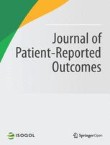2022 Citation Impact
2.7 - 2-year Impact Factor
3.4 - 5-year Impact Factor
1.078 - SNIP (Source Normalized Impact per Paper)
0.729 - SJR (SCImago Journal Rank)
2023 Speed
10 days submission to first editorial decision for all manuscripts (Median)
173 days submission to accept (Median)
2023 Usage
642,043 downloads
559 Altmetric mentions
